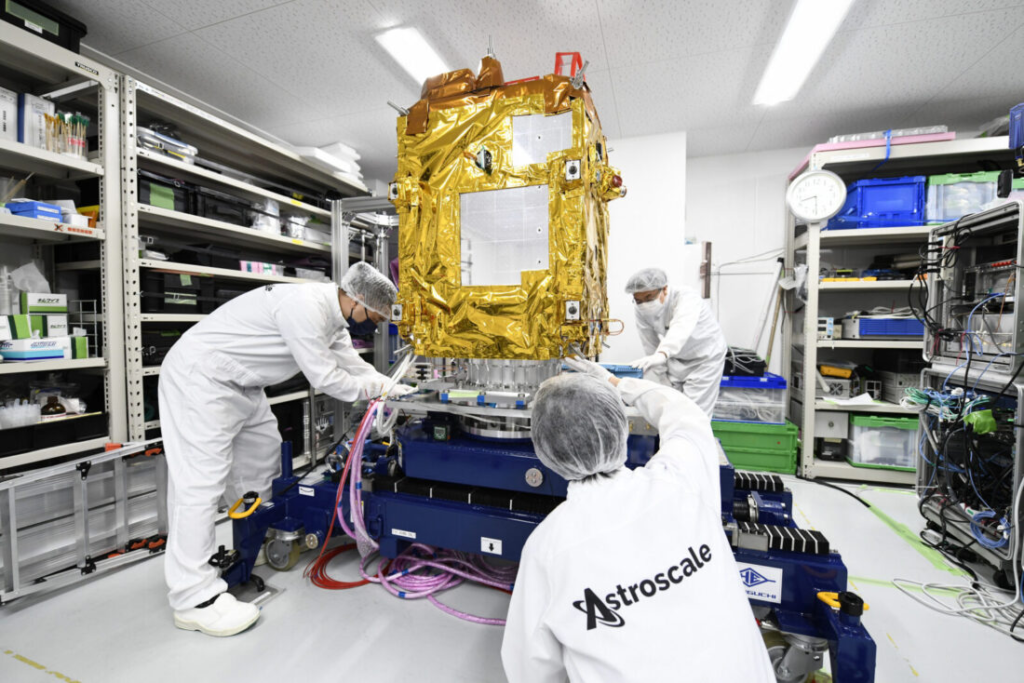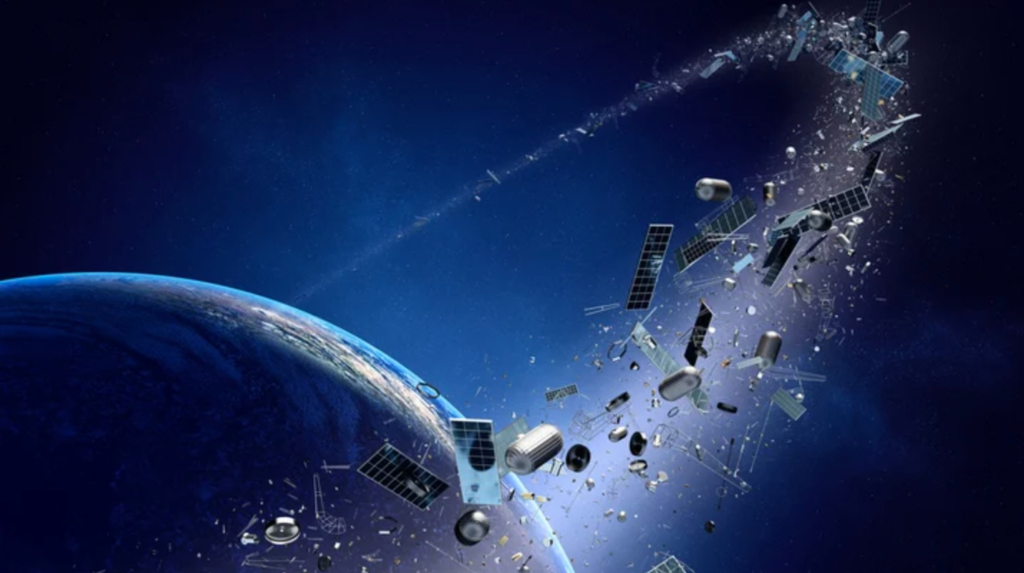
Rocket Lab’s Space Debris Removal Mission Is Coming Up
Rocket Lab always seems to be working on some sort of unique or ambitious mission of the future. With such frequent launches thanks to Electron, almost every week the company gives us a new update on the next mission. This week was no different as they released more information on the upcoming launch meant to help remove space debris from Earth’s orbit.
Just a few days ago, Rocket Lab announced that progress for this mission was coming along, with the satellite currently in the clean room at Astroscale. Specifically, the mission aims to explore the ability to remove satellites and space debris from orbit at the end of their operational life. With some success, this initial mission, launched on top of Electron, could be the start of a more sustainable space environment.
The mission is a partnership between Rocket Lab and Astroscale Japan. Rocket Lab is providing the launch service from Launch Complex 1 and Astroscale is providing the space debris removal satellite which is part of a bigger contract with JAXA. Here I will go more in-depth into the goal of this mission, how it works, Rocket Lab’s importance, and more.
Mission Update

Very recently on September 1st Rocket Lab tweeted saying, “Launching on Electron, this innovative mission aims to explore the ability to remove satellites and debris from orbit at the end of their operational life, ensuring a sustainable space environment for the future.” The satellite responsible is named the Active Debris Removal by Astroscale-Japan satellite, also referred to as ADRAS-J. This Rocket Lab tweet was in response to a tweet from Astroscale on the progress of the mission. Specifically, on August 31st, Astroscale tweeted mentioning, “ADRAS-J looking good in our clean room in Tokyo! ICYMI, we’ve been selected as a contract partner for a technology study in Phase II of JAXA’s Commercial Removal of Debris Demonstration Project.” This tweet included a few images of the satellite within the cleanroom.
Almost a year ago in September of 2021, Rocket Lab announced it had signed a dedicated launch contract with Astroscale Japan, a market leader in satellite servicing and long-term orbital sustainability. Originally scheduled for lift-off from Rocket Lab Launch Complex 1 in 2023, it looks as if the date has moved to a possible launch even sooner, later this year. The Electron rocket will launch the Active Debris Removal satellite, which has been selected by the Japan Aerospace Exploration Agency (JAXA) for its Commercial Removal of Debris Demonstration Project (CRD2), one of the world’s first technology demonstrations of removing large-scale debris from orbit.
Taking a closer look at the mission profile, Electron will launch, separate stages, continue towards orbit, and then deploy Electron’s kick stage to deploy the satellite into a precise orbit. From here, the satellite is designed to rendezvous with a piece of orbital debris, a long abandoned upper stage rocket body. The satellite aims to demonstrate proximity operations and obtain images of the rocket body, delivering observational data to better understand the debris environment. A planned second phase of the mission, which has yet to be completed, intends to demonstrate the de-orbit of the debris. As of right now, based on different updates from some of the companies involved, it looks as if the mission is coming along very well and we are not far away from this launch and demonstration.
Removing Space Debris

Now that we know more about the mission’s progress, we can take a closer look at how exactly they plan to remove orbital debris, Rocket Lab’s thoughts on the mission, and more. At the time of the mission announcement, CEO of Rocket Lab, Peter Beck said, “The ability to actively remove satellites and debris from orbit at the end of their operational life will likely play a key role in ensuring a sustainable space environment for the future, so we’re delighted to enable Astroscale to demonstrate new and innovative solutions in this field. Rendezvousing with a piece of debris on orbit, traveling at around 27,000 km per hour, is a highly complex task that requires absolute precision when it comes to orbital deployment. Electron’s Kick Stage has demonstrated this precision across 18 missions, providing in-space transportation to place our customers’ satellites exactly where they need to go.”
Electron’s kick stage acts as the third stage of the rocket and is meant to eliminate the added risk, complexity, and cost, of having to develop your own spacecraft propulsion or using a third-party space
tug to deliver your spacecraft to the desired orbit when flying. The Kick Stage’s propulsion system consists of Rocket Lab’s in-house designed and built Curie engine, six low minimum impulse bit cold gas Reaction Control System thrusters, a tank pressurization system, and high propellant mass fraction tanks which can be scaled to meet mission-specific needs. Compared to Photon, the kick stage is a slightly less powerful and mission specific piece of rocket hardware. This being said, it has a necessary role in this upcoming mission.
In addition to Peter Beck’s thoughts, Nobu Okada, Founder and CEO of Astroscale mentioned, “Reliable and commercially viable launch vehicles like Rocket Lab’s Electron rocket enable frequent and flexible access to space, allowing us to advance our on-orbit services which are fundamental to the growth of the space infrastructure and economy. Rocket Lab and Astroscale have become leaders in our respective markets and I am thrilled to collaborate on the Active Debris Removal satellite, a groundbreaking mission that will shape the technologies and policies needed to drive space sustainability forward.”
This study will focus on the ground test of development hardware and software that are key for two critical areas of the Phase II mission: close proximity operations and the capture mechanism design. Ground tests will be conducted to verify the design concepts and performance of this hardware and software by using JAXA’s advanced Simulation Apparatus for Target Capture Dynamics. In addition, the study will require satellite design detail trades and analysis, and mission operation concepts. The results of this conceptual study will be used as a reference for the technical feasibility of Phase II. Participating in this study is a necessary step to be considered by JAXA as the satellite and mission provider for the CRD2 Phase II mission. However, before any of this happens, the first and upcoming mission apart of Phase I needs to be completed successfully.
While this is quite a unique mission, it’s not the first time Rocket Lab has worked with a company trying to remove space debris. Just a few months ago on the company’s There And Back Again mission, they deployed AuroraSat-1. The mission was a demonstration of the company’s proprietary propulsion devices and plasma brakes that provide efficient propulsion and deorbiting capabilities for small satellites. The CubeSat will validate the water-based propellant and mobility control of its Resistojets that can assist CubeSats with detumbling capabilities and propulsion-based attitude control. AuroraSat-1 will also test its deployable Plasma Brakes which combine a micro-tether with charged particles in space, to generate significant amounts of drag to deorbit the spacecraft safely at the end of its life. Similar to the upcoming mission with Astroscale, this previous launch used Electron’s kick stage to place the CubeSat in a precise orbit.
One of the interesting aspects of Astroscale is the company’s specific focus and goals. Founded in 2013, Astroscale is trying to develop innovative and scalable solutions across the spectrum of on-orbit servicing, including life extension, in situ space situational awareness, end of life, and active debris removal, to create sustainable space systems and mitigate the growing and hazardous buildup of debris in space. They point out there are already thousands of pieces of existing large debris, consisting of defunct satellites and spent upper stage rocket bodies, that are currently in orbit. This service requires a “non-cooperative” grappling solution as this debris was not prepared for de-orbit before launch. Astroscale is partnering with national space agencies and international organizations to research and develop missions that incorporate innovative solutions for the capture and removal of existing environmentally critical debris. This includes the mission with Rocket Lab. They also highlight that the rise of large commercial satellite constellations in low Earth orbit will provide services that improve quality of life on Earth. They will also lead to an increase in the number of objects in key orbits, raising the risk of further debris creation and threatening the very services space systems provide. A problem that Astroscale is working to fix with partners such as Rocket Lab.
Conclusion
Rocket Lab has been very busy as they work on a host of different projects and missions for the future. Included in the company’s ambitious missions is an upcoming launch of a space debris removal satellite from Astroscale. Together they are trying to improve the quality of low Earth orbit by removing space debris. We will have to wait and see how it progresses and the impact it has on the space industry.